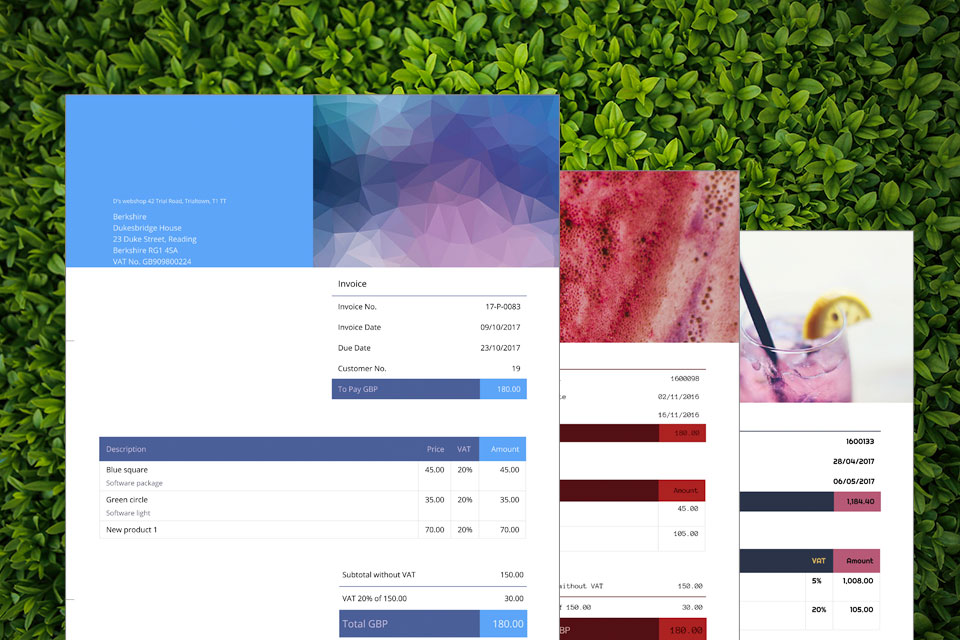Officially, each invoice you create needs to contain a set of information in order to be considered legal. These requirements are based on regulations surrounding business sales.
While it might sound a bit intimidating, once you realise what information needs to be included, it all seems very straightforward. However, there might be a couple things to keep in mind if you’re working with Word or Excel invoice templates. Make sure all your invoices include:
- Their own invoice number, following your number sequence
- The invoice date
- The name and address of your company and contact details
- The name and address of your customer
- A description of the goods/service you’re providing
- The subtotals
- VAT (if applicable)
- The total amount due
While these are the main details that need to be on each invoice you create, there are additional elements that can help make your invoices professional and improve communication with your customers.

1. Additional information about your company
Including your name and address and basic contact details is important, but it’s also worth considering the easiest way for your customer to get in touch with you. Sometimes this is through email or phone, but depending on your customers and your business, it might even be through social media, Skype, WhatsApp, or another platform.
By considering your customer and adding details about the easiest way to get in touch with you, you’re extending a personal and professional note that could help speed up the sales process in case there are any questions.
2. Payment terms and a due date
It’s not required to include a due date for payment of your invoice. Standard payment terms in the UK are 30 days from the invoice date. But without a clear date on the invoice, it’s arguably easier for customers to set the invoice aside for payment at a later date (and perhaps forget about it), or to neglect to make a payment altogether.
Clear payment terms and a due date remind the customer that payment must be made before a certain time, and can help you to get paid faster and avoid overdue invoices.
3. Payment method for your invoice
Making it as easy as possible for your customers to pay is one of the best ways to ensure you get paid quickly. So if you specify the payment method - PayPal, direct debit, etc. This makes it immediately clear how they should go about making a payment.
And, if you connect an online payment through your invoicing software, your customer will also have the option to pay you the instant they receive your invoice.
4. Be courteous
While it goes without saying that you should always keep a customer service mindset when running a business, you can also extend this to your invoices to add a personal touch.
A custom note, added simply at the end of an invoice can go a long way in helping your customers to feel understood and appreciated - two things that can then help in you getting repeat business and positive word of mouth.
